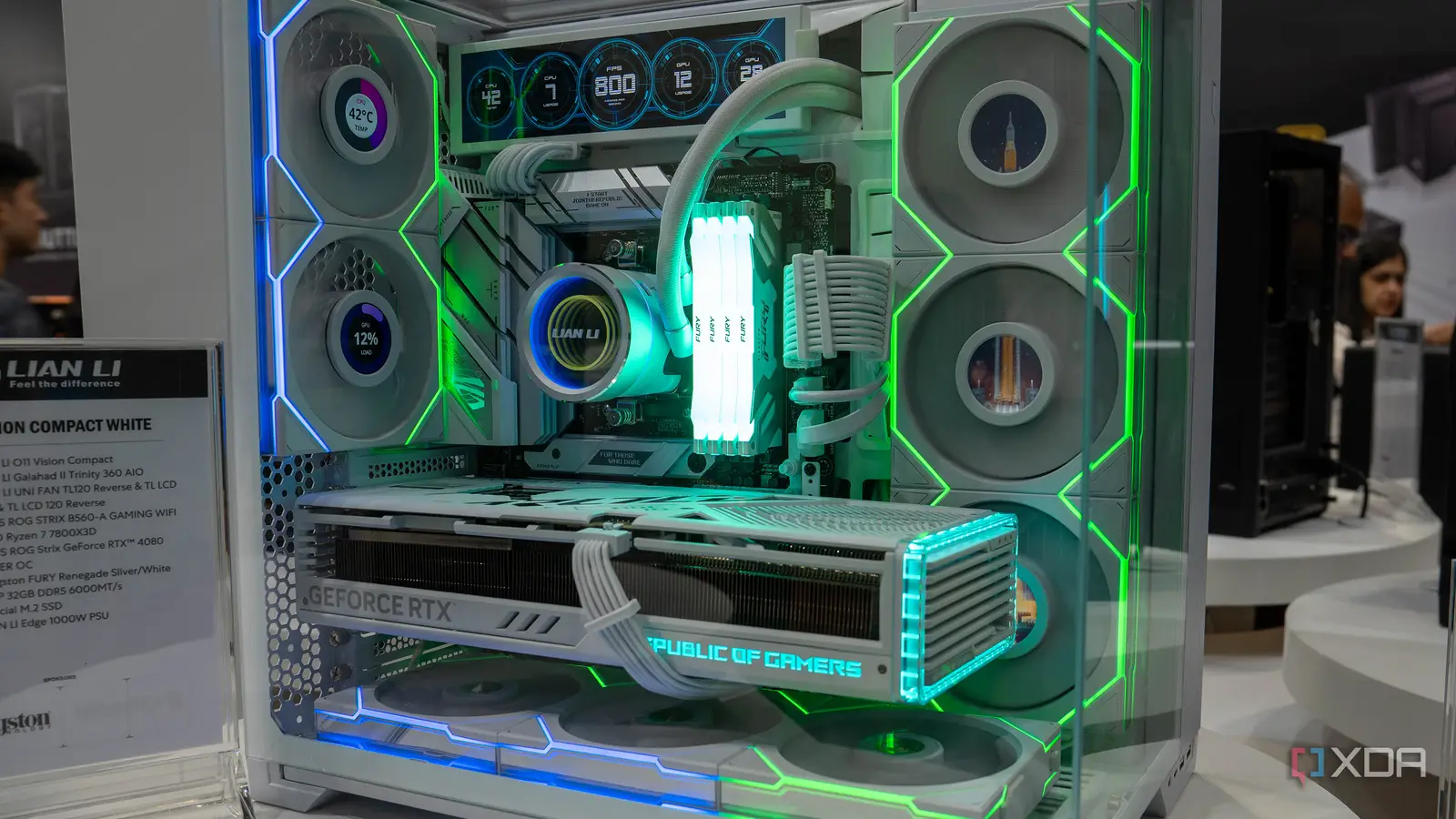
After what seemed like forever, PC cases in the last few years finally saw a growing trend toward smaller form factors. SFF cases had started to become more popular, and case models had some much-needed variety. However, of late, PC cases have begun a bit of a reversal toward larger sizes, and it’s not surprising. The needs and preferences of the modern PC builder have inevitably forced manufacturers to prioritize large cases again, taking us back to a time many of us thought we’d never see again.
Most graphics cards are monster-sized
The inevitable march of technology
Alas, with great power comes a desperate need for space. The more powerful graphics cards become, the more power they need, and the more heat they generate. The cooling assembly needs to grow in step, which makes beefy graphics cards inevitable. Today, outside a handful of SFF and dual-slot cards, GPUs invariably dominate the inside of a PC case. Massive, triple-slot hunks of metal need all the room they can get, not only to physically fit inside the case, but also to be able to stay cool under heavy loads.
Modern PC cases must accommodate these monstrous graphics cards, which is much harder to do inside a mini-ITX case. Squeezing ever more transistors into the GPU die has been one of the few ways GPU manufacturers have managed to deliver gen-on-gen gains. Despite that strategy not paying off as well in recent years — look at Nvidia’s RTX 50 series, for instance — it’s not going out of vogue anytime soon. Even if a PC builder settles on a compact graphics card, they would probably want to switch to a bigger, more powerful one in the future, which necessitates buying a case that’s prepared for the upgrade.
Advanced cooling hardware needs room
Optimum airflow isn’t optional anymore
Just as graphics cards grow more power-hungry with every generation, high-end CPUs, too, need more serious cooling hardware year after year. The average gamer rocking a 65W chip might get away with a budget, single-tower air cooler, but those running top-tier Core i9, Core Ultra, or Ryzen 9 CPUs almost always gravitate toward bulky AIO liquid coolers. Combine AIO radiators with multiple case fans handling air intake and exhaust, and you’re looking at an elaborate setup that feels at home only inside a giant mid-tower or full-tower case.
The “future-proofing” angle is again at play here — many builders default to AIOs even if their current processor doesn’t really need one. They’re thinking about a future CPU upgrade that would justify the premium liquid cooler. Besides, enthusiasts who want to craft a custom watercooling loop inside their case are forced to limit their search to larger cases. And then there are the users who love humongous, dual-tower air coolers that look much better in a bigger case, despite being functionally fine in a compact chassis.
Larger cases are more convenient to build in
It’s painfully apparent that the more room you have in the case, the more comfortable you’ll feel assembling your components. From enhanced visibility and maneuverability to convenient cable management and cleaning, a spacious case makes your life easier in more ways than one. Dual-chamber cases can easily hide all your cables, allowing more space for additional case fans and larger graphics cards. Huge cases also benefit your system by limiting the number of hot spots and permitting you to install larger fans (140mm or 200mm).
Many mid-tower and full-tower cases even enable you to build in multiple configurations by moving modular panels around, injecting a whole new level of flexibility into the mix. It’s not impossible to build an SFF PC, even for a first-time builder, but it’s sure as hell not going to be a walk in the park compared to working with a larger case. By picking the latter, you’re also making your future self’s life easier — removing and installing components will be significantly easier whenever you get around to it.
The masses love a giant, esthetic case
PC building has gone mainstream
The appeal of an SFF PC is undeniable, but it’s still a sentiment echoed by a small niche of consumers. The majority of modern PC builders tend to favor larger cases that allow them to flaunt their builds conventionally. These bigger cases appeal to both the average PC gamer and to the enthusiast who needs maximum space to install multiple hard drives, a custom loop, or multiple graphics cards. Manufacturers that realize this tend to prioritize bigger cases over smaller ones, further bolstering the trend.
A gaming PC is never just a tool; it’s an expression of creativity that places huge value on esthetics. Larger cases enable most builders to freely indulge in that expression, adding multiple RGB components, fans, cables, and accessories to their machines. Esthetics are subjective, and SFF cases can look just as fancy, but the fact is that they’re still not popular enough to buck the trend.
The future of SFF PCs never arrived
Once believed to be the final form of the PC, the compact form factor never became mainstream. As much as many of us dunk on fish tank cases, their appeal is undeniable to the majority of PC builders. Whether due to mainstream preferences or the needs of modern hardware, larger cases have made a resurgent return. It’ll be interesting to see if future components will allow SFF cases to gain more relevance, whether by slashing power consumption or replacing hardware-powered performance gains.